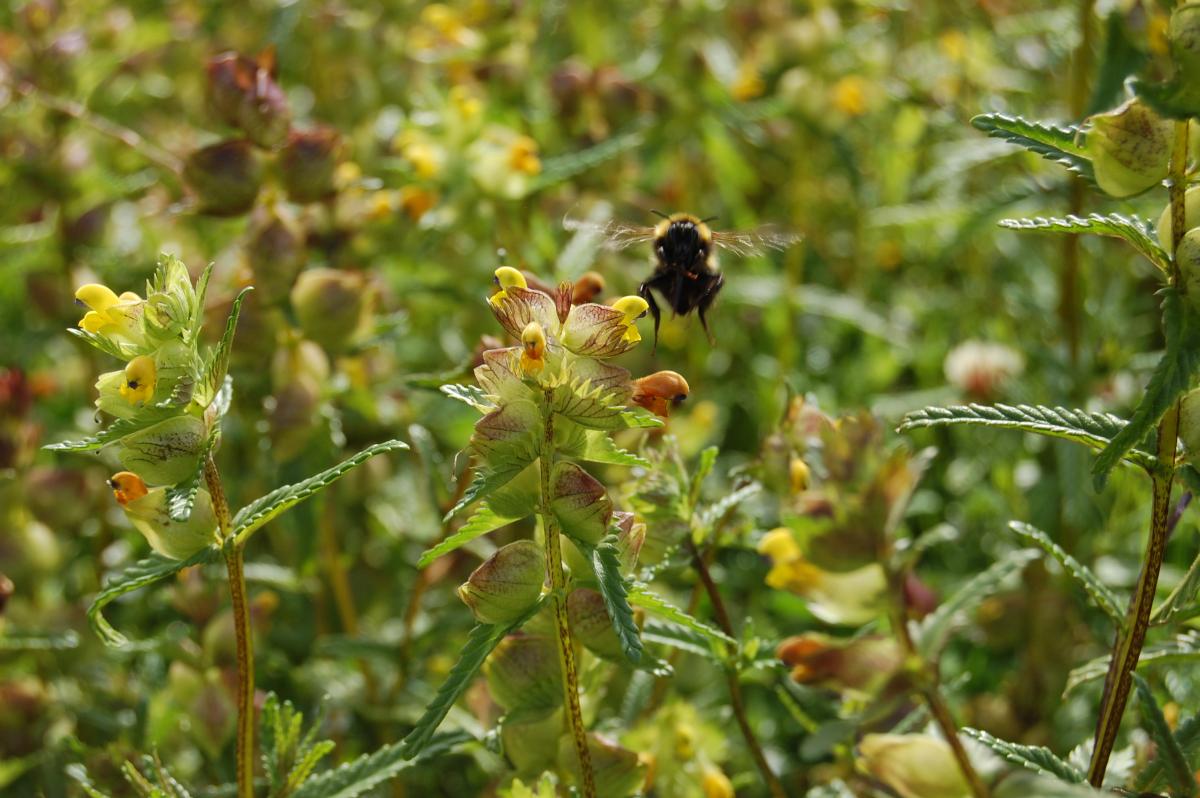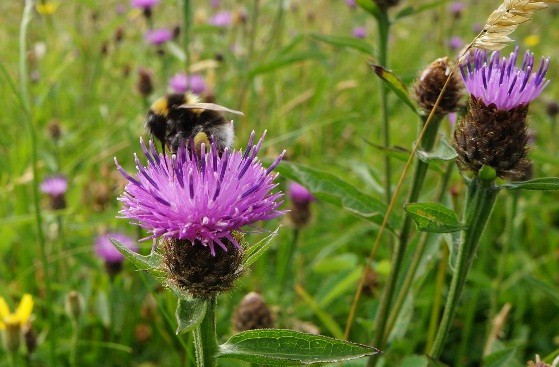 During the spring look out for bumblebee queens searching for nesting sites in walls, cracks in pavements, trees, or even an old hanging basket! During the spring look out for bumblebee queens searching for nesting sites in walls, cracks in pavements, trees, or even an old hanging basket!
Their wings make a distinctive low buzz as they slowly zig zag around looking for the perfect site. They don't make their own holes, but prefer to use existing cavities such as old mouse holes or missing mortar. At this time of year they are emerging from hibernation, gathering nectar and pollen to store in their nest hole. This will feed the first batch of hatched larvae, which grow into the first "worker bees" of the year. The queens then remain in their nest, being fed by the workers and laying eggs. Bumblebees, like most pollinators, have decline in numbers over the past few decades, and so recording them helps to us monitor their populations. If you're interested in learning more about identifying the different species there are some good guides on the Bumblebee Conservation Trust website. You can take part in their surveys or record your sightings on iRecord. Read all about our Bee Monitoring and Hay Time Rescue Project here.Read a blog about early spring bees from the Wildlife Trust here. |

